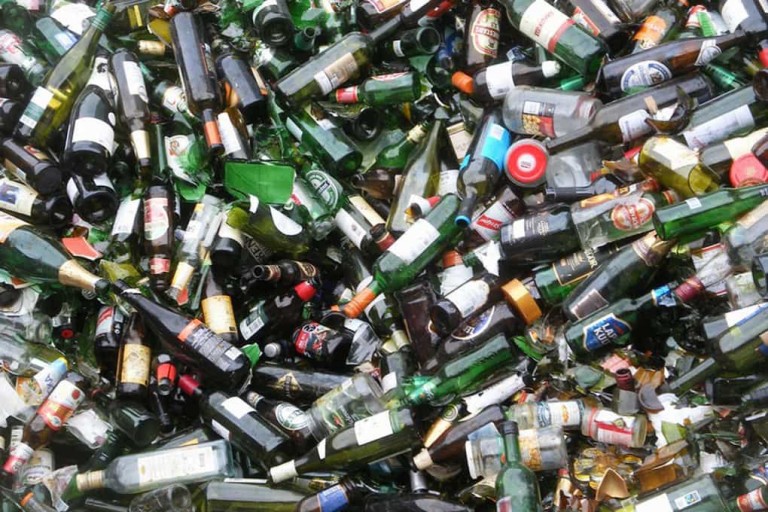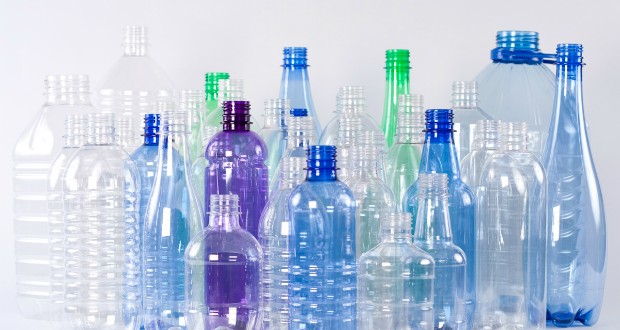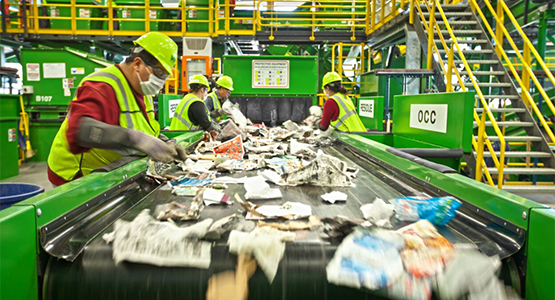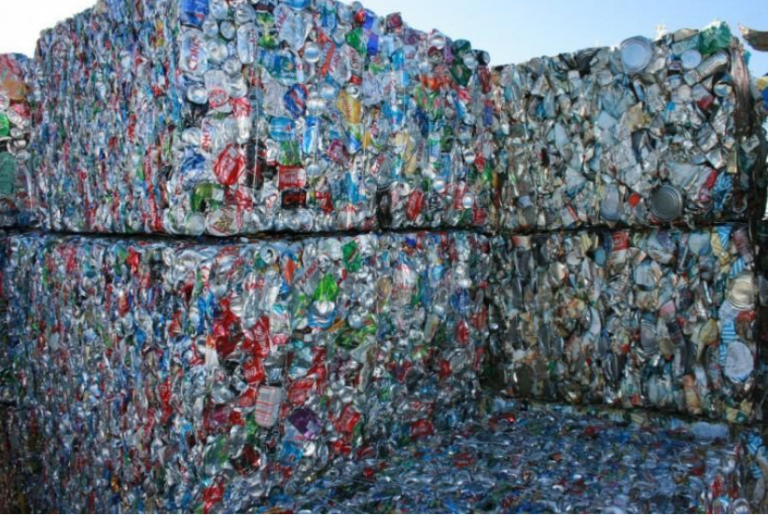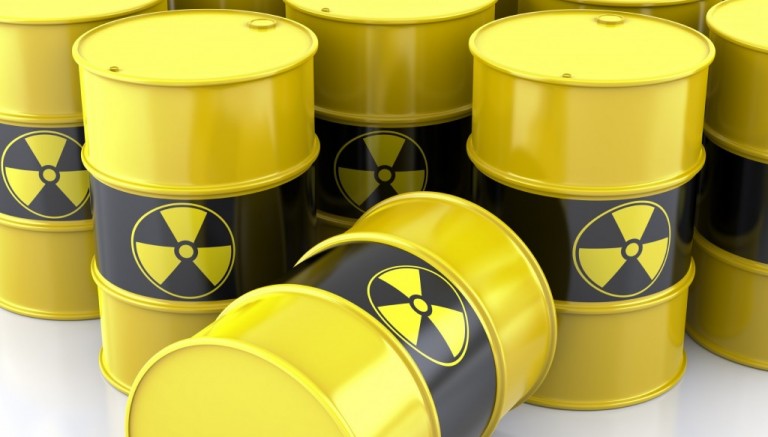What is the impact of recycling on the consumption of energy and raw materials
Since the 90s of the last century, waste recycling has become a major element of sustainable development. Exhaustion of natural resources is inevitable when their global consumption by the economy increases by 1% per year. In the best case, recycling can slow down this process for several years or a few decades, but recycling of over 80% of the generated waste, would lead to significant delay of the exhaustion of natural resources.
If there are no recycling processes of used and waste materials, this would mean that new products have to be produced by mining and extraction of natural raw resources. Recycling is a safe way to preserve the existing raw mateirals and it is required for their preservation for future use. Taking steps to save the natural resources such as ores, minerals, water and wood ensures their sustainable and optimal use.
A lot of energy is used to process natural raw materials in the production process. Recycling plays an important role in reducing energy consumption, which is significant for the major industries /e.g. mining and refining/.
Recycling and our lifestyle
The food we buy in the food store, the electricity we use in order our electrical and electronic devices to function: all consumer goods require raw materials, water and energy to exist – and to be destroyed.
As a living being, every product has its own life and we can talk about its life cycle. The management of the life cycle has advantages for the industry, it benefits the environment and its resources, the people’s health and all living organisms:
- Significant reduction of production costs by reducing energy consumption and use of raw materials;
- Reduction of contaminating emissions.
From the very concept of a product, its life is an economic choice, which should include not only ecological effects of its production and use, but also the end of its life (management of the life cycle). The design of a consumer product with regard to its future recycling should be complied with all industrial activities.
Ecology and recycling
The ecological footprint measures the impact that human have on nature. This tool is an indicator of the productive area, averagely needed per person, to ensure the resource consumption (food, heating, construction materials, clean air and drinking water), and its needs with regard to the waste management.
Globally, the environmental footprint is 2,2 hectares per person, equivalent to 20 000 m2. There is over-consumption of resources, damage to ecosystems. In this way, we are in a “situation of exceeding in terms of the planet capacity“.
The society has to make a choice between maintaining an unviable economic model and unviable consumption practices, or to accept the imposed limits and start acting according the respective way. Reducing the use of non-recyclable packages, reducing the generation of waste and reducing the consumption of energy and water is an environmental behavior that we all have to adopt.
It takes 200-450 years for a plastic bag to degrade. Plastic bags are mainly made of petroleum or natural gas – non-renewable and non-polluting resources. Twelve million barrels of petroleum are required to make 100 billion plastic bags.
In addition to reduction of petroleum consumption (700 kilograms of raw petroleum per 1 ton of recycled plastic), the recycling of plastics saves significant amount of energy (57-75%) and saves a lot of water resources (2500 liters for 1 ton recycled plastic).
Paper and cardboard make up about one third of the waste of an average household. Each year the amount of wood and paper that is disposed by North America, would be enough to heat up 5 million houses for 200 years! Recycling 1 ton of cardboard saves 2.5 tons of wood.
One sheet of paper requires 25-45% less energy than a sheet made of primary wood fibers, and saves 15 grams of wood and 1 liter (58-90%) of water. Recycling of one ton of waste paper is equivalent to fibers from 11 to 24 trees, depending on their size and type. The benefits are even bigger: 74% reduction of air pollution and 35% reduction of water consumption.
A ton of recycled copy paper:
- saves 17 mature trees;
- prevents formation of 490 kilograms of solid waste
- reduces the required amounts of water by 46 352 liters
- reduces the suspended solid substances in the water by 3.1 kilograms
- reduces the emissions in the air by 1,076 kilograms
- reduces the consumption of natural gas by 70 m3
Toilet paper made of paper produced from recycled paper, is just as hygienic as its forest twin. So, recycling requires less energy, less water and saves our forests.
Recycling of glass and plastic
Glass is an inert material. It takes 4000 years for a deposited glass bottle to degrade. The production of new glass requires a lot of energy – the basic mixture of sand, sodium carbonate and lime should be heated up to 1500 ° C ÷ 1600 ° C.
By recycling a brown, green or transparent glass, the energy economy reaches 30%. Recycling just one bottle saves energy required to light a 100-watt bulb for four hours! Moreover, glass recycling reduces the water consumption by 50%, leads to 20% less pollution of the air, and creates 80% less mining waste, compared to the production of glass from natural raw materials.
Just like the glass and plastic, most metals can be recycled countless times. Recycling of metals preserves the environment in many ways. At the top of this list is the mining of metal ores – extremely destructive and contaminating activity. The recycling of metals helps to avoid extraction, refining, transportation – activities related to the consumption of a significant amount of energy and water. As a result, this saves us from the formation of significant amounts of greenhouses gases.
Production of only one aluminium can from scrap saves 8 kilograms of bauxite and 4 kilograms of chemicals, also saves energy required to light a 100-watt bulb for 20 hours. One ton of recycled aluminium saves 95% of energy, 8 m3 water and the formation of 6 tons of greenhouse gases.
At present, 65% of the steel products are produced of recycled steel. One ton of recycled iron saves 1 100 kilograms of iron ore, 635 kilograms of coke, 54 kilograms of limestone, and provides 61-70% energy savings and 40-70% water savings. Of the steels of six recycled cars can be produced the reinforcement for a house.
The natural resources have to be used according to the most efficient way without exhausting the resources of the planet. The recyclable waste can be injected back to the business as secondary raw materials.
Work has to be done to facilitate the process and realization of the full potential of these materials. And also the sustainable supply of primary raw materials has to be encouraged globally.
Recycling is a form of waste management that involves turning waste into reusable products. Recycling helps to be reduced the energy consumption, the consumption of fresh raw materials, the air pollution and contamination of the waters (from landfilled waste), by reducing the need for “conventional” waste disposal and reduction of the emissions of greenhouse gases. It is important the benefits of this process to be understood.
Recycling guarantees that the existing resources will be used wisely and sustainably.
